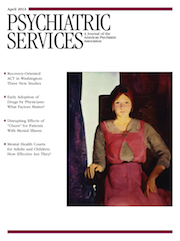A Mental Healthcare Model for Mass Trauma Survivors: Control-Focused Behavioral Treatment of Earthquake, War and Torture Trauma
Basoğlu and Şalcioğlu are Turkish psychiatrists who have written a book about the use of a particular form of evidenced-based practice—control-focused behavioral treatment—based on their work with Turkish earthquake and torture survivors. The book has three sections: theory, assessment and treatment, and implications for the care of mass trauma survivors. There are also three appendices, including a self-help manual for survivors.
The authors operate from a traditional disaster mental health perspective in their focus on the trauma that can result from natural disasters or political terrorism, although they are careful to not conflate a broad definition of trauma with posttraumatic stress disorder. They are very careful to back up all of their assumptions and assertions with many empirical studies, conducted mostly in Turkey but also elsewhere. They conclude that the goal of treatment should not be the cessation of anxiety associated with the trauma caused by disaster or torture but rather the regaining and reconstruction of a sense of control.
Some of the book is a bit turgid and research heavy for practitioners. However, there is a refreshing emphasis on teaching clients the skills of desensitization and regaining a sense of mastery in actual field situations (rather than in a psychiatric office) and being able to do this in a single session or through use of the self-help manual provided. These options recognize that many regions of the world cannot offer prolonged psychiatric or psychological treatment, and they reinforce a belief that people have the capacity to heal or help themselves when they are given both direction and encouragement. The authors are also mindful of the complications that arise from prolonged grief, especially when it interacts with trauma—an awareness that is often absent from other treatment protocols for disaster survivors. The chapter that offers a mental health care model for survivors and the self-help manual in the appendix are both valuable and can be adapted to many postdisaster situations.
The book in its entirety is a bit dense and daunting, but the selective chapters and appendices are invaluable for practitioners who are in the field responding to disaster and torture survivors. Although the authors do not suggest this, I can see how their protocols can fit with mutual aid and support groups to reinforce the collective nature of postdisaster trauma and importance of collaborative self-help in recovery. I plan to adapt some of their ideas and protocols in my own work of international disaster response and believe that readers of this journal who engage in similar practice environments will find Basoğlu and Şalcioğlu’s model to be a useful foundation for effective practice.



